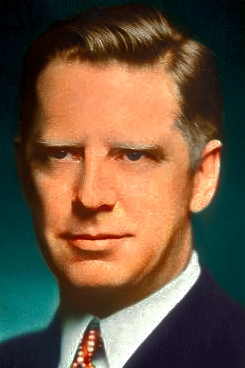NORMANDY TRAP TO NET 100,000 NAZIS
Patton opens new drive along Seine
1,200 German tanks destroyed since D-Day; four Allied armies hammer foes
SHAEF, London, England (AP) –
At least 100,000 Germans will be accounted for in captured, killed and wounded when operations are completed in the Argentan-Falaise trap in Normandy, it was estimated today.
Indications were that Lt. Gen. George S. Patton had launched a new drive along the Seine toward the English Channel in a new operation to cut off the survivors of the Nazi debacle in Normandy.
It was not clear at Supreme Headquarters on which side of the meandering Seine that the drive was being launched, but it is probably on the south. Patton has established a bridgehead above Paris in the Mantes area.
Heavy fighting was reported around Étampes, 22 miles south of the Paris outskirts. Orléans was under German shellfire.
Fighting was also reported around Rambouillet, 15 miles from the edge of the capital.
1,200 Nazi tanks destroyed
It was announced that the Allies since D-Day had destroyed or damaged 1,200 German tanks in western France. This is the equivalent of the equipment of 8½ German tank divisions at present strength.
Four Allied armies in slicing offensives gaining up to ten miles rolled disorganized Germans back upon the bridgeless lower Seine River today, fashioning a vast new pocket between Falaise and the American bridgehead flung over the river northwest of Paris.
Canadian, British and U.S. armies struck eastward in this enveloping push, and the U.S. 3rd Army crunched in from the other flank in a drive toward the sea. The heavily-bled German 7th Army struggled frantically to pull across the looping Seine River by boat.
Front dispatches declared the enemy was so disorganized he had been unable to make any coordinated stand or launch strong counterthrusts.
The U.S. 3rd Army was hitting westward and northward from the bridgehead at Mantes, 25 miles northwest of Paris. Here it could also strike above the Seine into the rocket-gun Pas-de-Calais coast.
The Canadian 1st Army advanced four to ten miles on a broad front between the sea and Argentan, Belgian units took Cabourg on the Dives estuary, 16 miles across water from Le Havre. Dutchmen fought in the outskirts of Houlgate. British troops, gaining ten miles, seized Gacé, 15 miles east of Argentan. The U.S. 1st Army was also pounding in toward the Seine.
Foe surrenders ‘by platoons’
Germans trapped in the new pocket were surrendering “by platoons,” a Canadian officer declared.
Thirty thousand prisoners had been taken in the Falaise trap, with thousands more throwing up their hands. The dead were yet uncounted. Pocketed Germans had been virtually wiped out.
Front dispatches said Field Marshal von Kluge had presumably pulled put a large part of his forces but they were by no means saved as yet. “They have taken a thorough shellacking, and they know it,” said one U.S. officer.
Supreme Headquarters gave no news of the bridgehead at Mantes-Gassicourt, or the one southeast of Paris near Fontainebleau, where U.S. forces were but 30 miles from the historic Marne.
The Germans lost 30 tanks and 16 planes trying to protect forces fleeing north of the Seine above Mantes, front reports said. The Americans strengthened their grip here, and patrolled southeastward toward Paris. Substantial gains were scored southeast of Paris.
Patriots’ resistance increases
Reports that French patriots were seizing city after city in central and southern France, including Lyon, gave a clear indication that the Gestapo-dominated German High Command was capable of offering organized resistance to the Allies only in northwestern France.
But this was precisely the Nazi defenses in that section of France which the U.S. 3rd Army’s Seine bridgeheads northwest and southeast of Paris were threatening, including the flying bomb coast in the Pas-de-Calais.
In the area of Dreux, 45 miles southwest of the heart of Paris, Lt. Gen. George S. Patton’s troops also tightened their flank positions against the Germans, shaving them back toward the sea and the Seine. The Germans had thrown up flank protection and were fighting vigorously along the Avre in that area.
A front dispatch said there are indications that the total enemy killed and captured may run much higher than recent estimates, although the number of Germans still in the bag is a matter of guesswork.
The British 2nd Army and the U.S. 1st Army were busy wiping out the last Germans in the pocket and there was a prospect that another 24 hours may see the end of the pocket entirely.
The Canadian push on a front of about 50 miles from the sea toward Argentan where it meets Patton’s forces was virtually squeezing out the British 2nd and U.S. 1st Army in present operations.
The Canadians outflanked Cabourg along the coast and were within a mile of the important road hub of Lisieux, about 20 miles inland. Farther south, an advance of ten miles from Chambois took Gacé driving another deep salient in the German rearguards.
Some remnants of the German 7th Army were crossing the Seine – using in a few cases the very barges in which in their days of victory they hoped to invade England.


